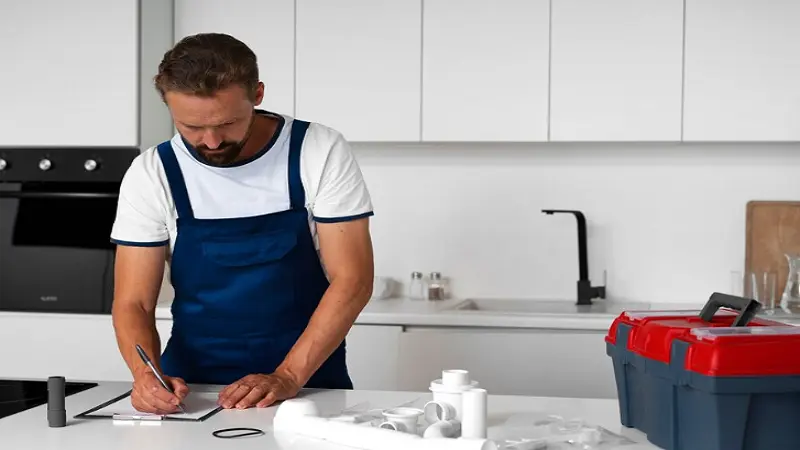Every homeowner knows that maintaining a house requires both preventive measures and quick action when emergencies arise. Plumbing issues and water damage are two of the most common problems that can disrupt daily life. However, with regular maintenance and knowledge of emergency restoration techniques, you can keep your home safe from costly repairs and potential hazards. This article will explore essential plumbing services and provide tips on how to handle emergency water restoration to ensure a safer, more efficient home.
Essential Plumbing Services: The Backbone of a Well-Functioning Home
Your plumbing system is one of the most critical aspects of your home’s infrastructure. A well-maintained plumbing system ensures a clean water supply, proper drainage, and the prevention of leaks and water damage. Routine plumbing services not only keep everything running smoothly but also help identify potential problems before they turn into disasters. For peace of mind, consider checking reviews of bob the plumber to find a trusted professional who can handle your plumbing needs with expertise and reliability.
Regular Drain Cleaning to Prevent Clogs
Clogged drains are among the most frequent plumbing issues homeowners face. While it’s tempting to rely on store-bought drain cleaners, they often provide only temporary solutions and can even cause damage to your pipes over time. Professional drain cleaning services use safe, effective methods to clear your pipes, ensuring that they remain in good condition.
Pro Tip: Schedule regular drain cleaning once a year to prevent the build-up of debris, grease, and hair, which are the primary culprits behind slow or clogged drains.
Leak Detection and Repair: Catching Small Issues Before They Grow
Leaks, no matter how small, can lead to significant water damage if left unchecked. Timely repair prevents mold growth, structural damage, and wasted water.
Fun Fact: A dripping faucet that leaks one drop per second can waste over 3,000 gallons of water per year. Fixing leaks quickly not only saves water but also reduces your utility bills.
Water Heater Maintenance for Optimal Performance
Whether it’s providing hot water for showers or doing dishes, a well-maintained water heater ensures consistent performance. Regular maintenance, such as flushing out sediment and checking for leaks, helps extend the life of your water heater and improves its efficiency.
Emergency Plumbing Services: Be Prepared for the Unexpected
From burst pipes to overflowing toilets, having access to emergency plumbing services ensures that help is available when you need it most. Many companies offer 24/7 services to handle urgent issues that can’t wait until regular business hours. Quick response is crucial, especially to prevent mold growth, which can occur within just 24-48 hours after water damage.
Bonus Tip: Keep the contact information of a trusted plumber on hand, so you’re prepared to act fast when an emergency strikes.
Emergency Water Restoration: Swift Action for Serious Damage
Water damage can strike unexpectedly due to plumbing issues, storms, or even accidents like overflowing appliances. The key to minimizing damage is acting quickly with the right water restoration techniques. Here’s how to handle water emergencies effectively.
Act Fast: Time is of the Essence
In a water emergency, every minute counts. Water can seep into walls, floors, and furniture, leading to extensive damage and the potential for mold growth. The faster you act, the better you can minimize long-term damage.
Pro Tip: Immediately turn off the water supply to prevent further flooding and call a water restoration professional to assess the situation and begin the drying process.
Remove Excess Water: The First Step in Restoration
Removing standing water is the first and most important step in emergency water restoration. Professional restoration teams use specialized equipment, such as pumps and industrial vacuums, to quickly remove water from your home.
Bonus Tip: While waiting for professionals to arrive, use towels, mops, or buckets to remove as much water as possible from affected areas. This can help prevent additional damage.
Drying and Dehumidification: Preventing Mold Growth
Professionals will use air movers, fans, and dehumidifiers to dry out affected areas and prevent mold from forming. Mold can begin to grow in as little as 24-48 hours, so quick action is essential.
Fun Fact: The average home contains over 10 gallons of water within its walls, floors, and ceilings. When water damage occurs, that hidden moisture can cause mold and structural damage if not properly addressed.
Mold Remediation: Stopping a Silent Threat
If water damage has led to mold growth, mold remediation services are essential. Mold can cause health problems and weaken the structural integrity of your home. A professional team will remove contaminated materials, treat surfaces to prevent further mold growth, and ensure that the air in your home is clean and safe.
Combining Plumbing Maintenance with Restoration Preparedness
Both preventive plumbing maintenance and emergency water restoration are crucial for keeping your home safe, efficient, and free from costly repairs. By scheduling regular plumbing services and knowing what to do in case of water damage, you can protect your home from common issues that many homeowners face.
Keep Your Plumbing System in Top Shape
Regular check-ups, drain cleaning, and prompt leak repair can save you from the stress and expense of major repairs down the road. A small investment in maintenance can prevent much larger problems in the future.
Be Ready for Emergencies
Water emergencies happen when you least expect them, but being prepared with a plan can make all the difference. Know how to shut off your water supply, have the number of a trusted plumber, and take swift action when water damage occurs.
A Safe and Efficient Home Starts with Smart Maintenance
Your home is one of your biggest investments, and protecting it from plumbing and water damage should be a priority. Regular plumbing maintenance and prompt action during water emergencies can keep your home functioning smoothly and safely. With these essential tips, you’ll be better equipped to handle any challenges that arise, ensuring a comfortable and secure living space for years to come.
